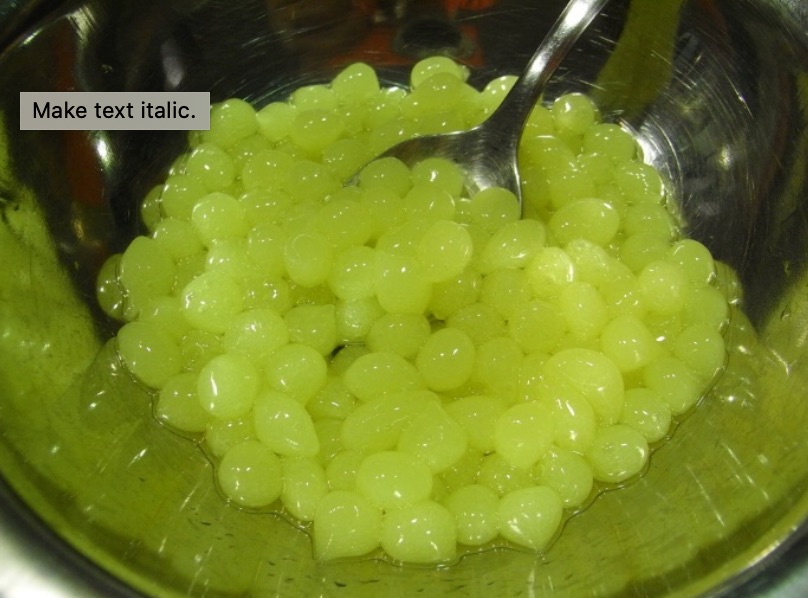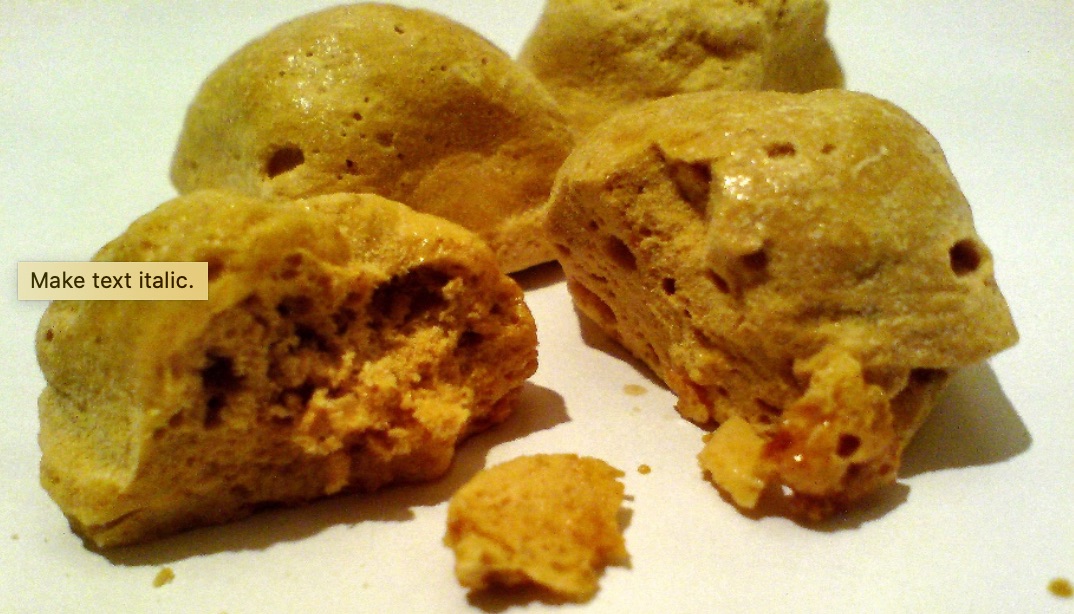
Welcome to this session on molecular gastronomy. By the end of the session you will: 1. Know what molecular gastronomy is. 2. Be able to explain how molecular gastronomy has influenced eating and drinking
1. Molecular gastronomy is the application of scientific principles to the understanding and improvement of small-scale food preparation. Put simply, it is the study of how food changes when it is cooked. 2. The term was invented by the Hungarian physicist Nicholas Kurti in 1969 and popularised by his collaborator, the French scientist Hervé. 3. Some people believe that it is a food fad or gimmick and certainly the term ‘molecular gastronomy’ is more popular with the media than with the food industry. Nevertheless, scientifically advanced cooking is popular and many molecular gastronomy cooking techniques are widely used.
Molecular gastronomy has been investigating many aspects of cooking, including how ingredients are changed by different cooking methods and how cooking methods affect the eventual flavour and texture of food.
Molecular gastronomy is associated with: 1. Theatrical presentation 2. Unusual tastes and textures 3. Multi-sensory dining experiences 4. The use of high-tech equipment
There are 3 different cooking techniques associated with molecular gastronomy: 1. Foams 2. Spherification 3. Fizz

Molecular gastronomy has led to an increase in the use of foams and froths in cooking.
A culinary foam consists of natural flavours such as fruit juices or vegetable purees, soup and stock bases mixed with gelling or stabilising agents such as lecithin, gelatine or natural fats in cream and other dairy produce.
There are two ways this can be achieved: Method 1 - Whipping the fluids with a hand-held immersion blender just under the surface of the liquid Method 2 - Extruding the fluid through a cream whipper that adds gas to create a foam or froth
Creating exactly the right foam requires great skill. When creating a foam, consider:
The liquid or puree must be thick and dense enough to hold its shape. For the foam to hold its shape for a period of time, a thickening or gelling agent must be used.
For hot foams, the best thickeners are fat (including butter, cream or milk) or starch. The perfect temperature for a hot foam is between 50°C and 65°C. It should not be kept for longer than 2 hours. Cold foams also require fat to stabilise the shape, however dairy-free foams can be made using gelatine.
Watch this video demonstrating how to make a foam

Spherification is the process of creating a gel around a liquid, forming a gelled sphere with a liquid centre. It can be used for almost any food substance. Spheres range in size, with smaller spheres of a few millimetres bursting like caviar when bitten and larger ones, of up to 3cm, releasing their liquid similar to an egg yolk.
Spheres are made by mixing a gelling agent, such as sodium alginate, with a liquid solution. This liquid (with the gelling ingredient in it) will not start to gel until it comes into contact with certain molecules, like calcium or potassium. If it is placed into a second liquid containing these molecules then it will begin to gel the liquid, starting at the outside and moving inwards. Until this process is complete, the inside will remain a liquid, completely encapsulated in a gel sphere.
There are two main spherification techniques: 1. Direct spherification - The gelling agent is added to the flavoured liquid, causing the film to grow inwards. The spheres continue to gel and will become solid over time, so need to be served quickly. 2. Reverse spherification - The gelling agent is added to the setting bath, causing the film to grow outwards. The spheres set after being removed from the bath, so this method is useful if you want to make your spheres ahead of time.
Watch this video demonstrating spherification
A well-known example of the fizz technique is when making honeycomb. This is made by adding bicarbonate of soda to a light caramel.

In fact, if you mix bicarbonate of soda with any form of acid and then add water, it will fizz. For example, a mixture of bicarbonate of soda, citric acid and icing sugar can be dusted onto toffees, boiled sweets or dry-skinned fruits to create a tongue-tingling effect.
Question 1
In your own words, what is molecular gastronomy?
Question 2
Which molecular gastronomy cooking technique is being described in the sentence below? “A mixture of bicarbonate of soda with any form of acid and water”
Question 3
Which molecular gastronomy cooking technique is being described in the sentence below? “A liquid is mixed with a gelling or stabilising agent using either a hand-held immersion blender or a cream whipper”.
Question 4
Which spherification technique involves adding the gelling agent to the flavoured liquid?
Question 5
Which spherification technique is best to use if you want to make your spheres ahead of time?
Now submit your answers to your teacher using the menu.